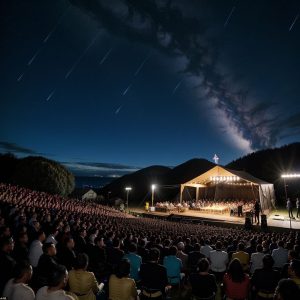Winter, with its cold embrace and quiet stillness, has long been a season of reflection, renewal, and celebration. Across the globe, cultures have developed unique ways to mark this time of year, weaving together ancient customs, religious practices, and a shared sense of community. The arrival of winter is not only a natural phenomenon but a moment when people come together to embrace the darkness and cold, celebrating hope, family, and the promise of new beginnings.
In Western cultures, the Christmas season is perhaps the most recognized winter celebration. For many, it represents a time of spiritual reflection, celebrating the birth of Jesus Christ, while also embracing secular traditions like gift-giving, feasts, and festive lights. The holiday brings warmth to the coldest of months, and in countries like the United States and the UK, people gather with loved ones around the Christmas tree, sharing meals and creating memories. Similarly, New Year’s Eve, a time for looking forward, is marked by countdowns, fireworks, and the promise of a fresh start.
In Eastern cultures, winter traditions vary greatly, but a common theme is the importance of family and ancestral worship. In China, the Lunar New Year, which falls in late January or early February, is a grand celebration of family bonds, fortune, and good health. The vibrant red decorations, dragon dances, and lavish feasts are accompanied by prayers for prosperity and happiness in the coming year. The Winter Solstice Festival, also known as Dongzhi, is another key event in China, where families come together to eat tangyuan (sweet rice balls) and honor their ancestors, marking the longest night of the year with warmth and togetherness.
Further to the north, in Scandinavian countries like Sweden, Finland, and Norway, the winter months are rich with traditions that honor the darkness while celebrating the return of light. Swedish festivities during Christmas, like the celebration of St. Lucia’s Day on December 13, bring light into the dark days with processions of children wearing candles in their hair, singing carols and spreading warmth through the community. In Finland, the Christmas season is a quiet time focused on family and rest, where many head to their summer cottages for a peaceful retreat, enjoying saunas and hearty meals.
In the Southern Hemisphere, where the winter months are reversed, countries like Australia and New Zealand embrace the winter solstice with festivals that celebrate the coming of longer days. The Māori people, for example, celebrate Matariki, the rise of the Pleiades star cluster, which signals the Māori New Year. This festival is marked by feasts, performances, and reflection on the past year, with a focus on community and environmental harmony.
The common thread running through these diverse celebrations is the emphasis on togetherness, whether it’s through religious rituals, family gatherings, or cultural practices. The cold winter months, often seen as a time of darkness and retreat, are transformed into opportunities for connection, renewal, and gratitude. Each culture’s unique customs offer a window into how humanity has long used winter as a time to reflect on the past and look forward to new beginnings, no matter where in the world they may be.

